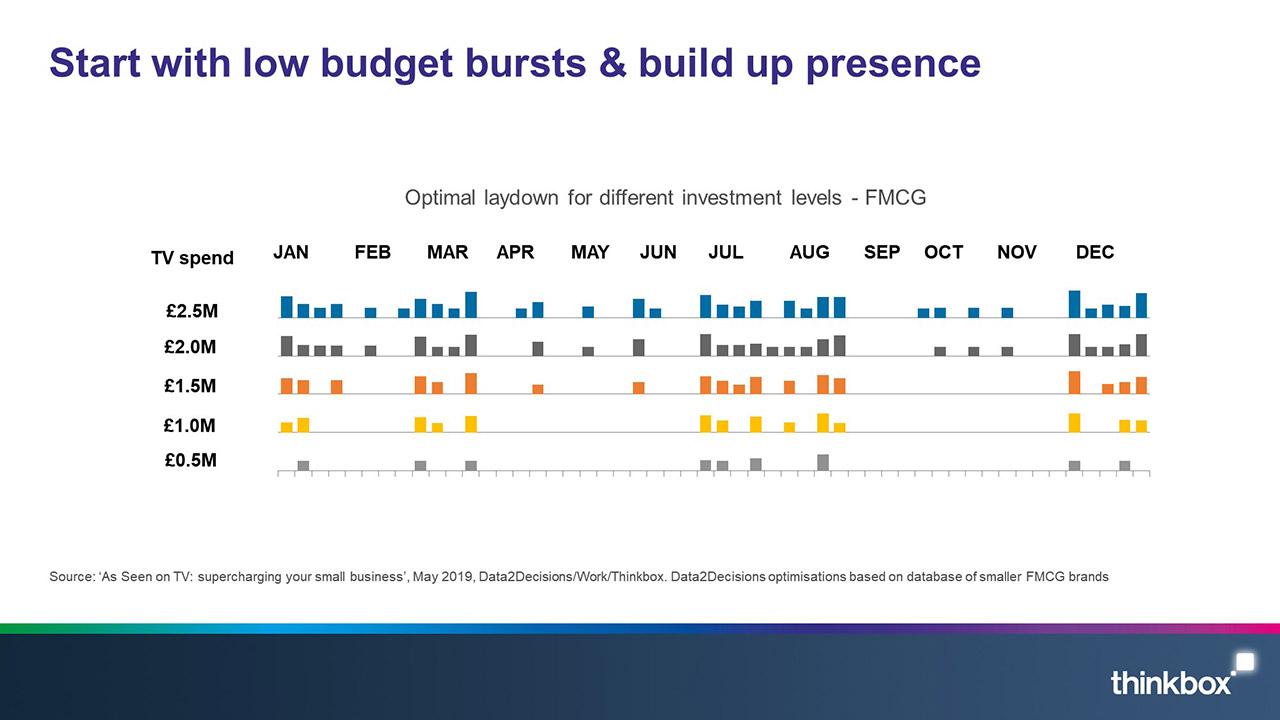As with all business decisions, using TV advertising for the first time will come with an element of uncertainty and potential risk. One of the best ways to manage this is to run a TV test.
Why is testing important
Stress testing your businesses infrastructure
Thinkbox has numerous pieces of research that demonstrate TV’s ability to drive response. Whilst this is an obvious business benefit, additional response can come with its challenges. If you are unprepared for an increase in demand, problems such as website performance and supply & delivery issues can occur. In turn this will create an early negative user experience for potential customers.
Creative performance
Producing an impactful and effective creative can be challenging and it is not always possible to get it right first time. Testing your TV activity provides the opportunity to make creative changes including time length optimisation.
Media mix optimisation
Through a test you may find that certain elements of your activity perform better than others (channel, programme, daypart, day of week, etc.). This will provide you with the opportunity to optimise.
Managing investment
Testing involves less cost commitment and the learnings can offer an opportunity to optimise your media planning or make changes to creative.
Ways to test TV
Broadcaster Video On Demand (BVOD) – As technology advances, so does the way we consume our TV content. An increasing percentage of the UK are using BVOD services to watch their favourite shows and increasingly are doing so on a TV set. This means the BVOD experience has never been more like its linear counterpart. Due to these similarities, for advertisers, BVOD is more and more becoming a viable way to test TV activity.
Regional testing – TV advertising does not have to be a big budget, national campaign. There are several different regional options available too, and these options naturally open the door to advertisers with a localised catchment area but also provide a good opportunity for testing. Both Channel 4 and ITV break the UK down into a number of different sections called macros (and in the case of ITV, micros) more details on which can be found at:
Start small and build – At lower budgets, a ‘burst’ strategy is optimal and priority weeks to be on air with a TV campaign should be based on seasonal peaks and lower TV costs. As the budget increases, it is better to move towards a continuity strategy, adding in more weeks of TV to avoid diminishing returns.

 Thinkbox
Thinkbox